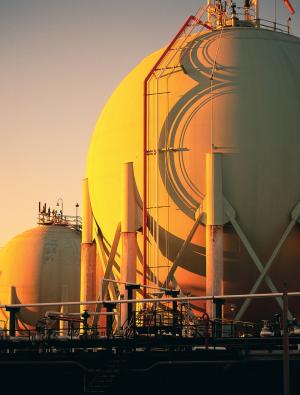Several new LNG plants are under construction, but firm supplies remain scarce. Will empty terminals alleviate gas-price pressures?
Michael T. Burr is Public Utilities Fortnightly’s editor-at-large. E-mail him at burr@pur.com.
Four years after Alan Greenspan sounded the alarm on the paucity of liquefied natural gas (LNG) regasification capacity in the United States, developers have responded with a fleet of new projects for importing LNG. Existing terminals have been expanded, an innovative offshore project has entered service, and ground has been broken for at least seven new facilities (see Table 1, “LNG Leaders”).

This robust response suggests U.S. gas customers can breathe a sigh of relief. Some 10 billion cubic feet per day (Bcf/d) of new LNG-import capacity will prevent the supply-demand dislocations that gas-market experts were predicting just a couple of years ago. Or will it?
Although a great deal of new LNG-regasification and storage capacity is planned, little of it actually has entered service, and many of the projects now under construction are moving ahead without having supplies committed for import. Likewise, dozens of gas-liquefaction facilities and LNG tankers are under construction, but few are tied to long-term off-take contracts in U.S. markets. In effect, LNG suppliers have acquired options on LNG capacity without committing to use it.

